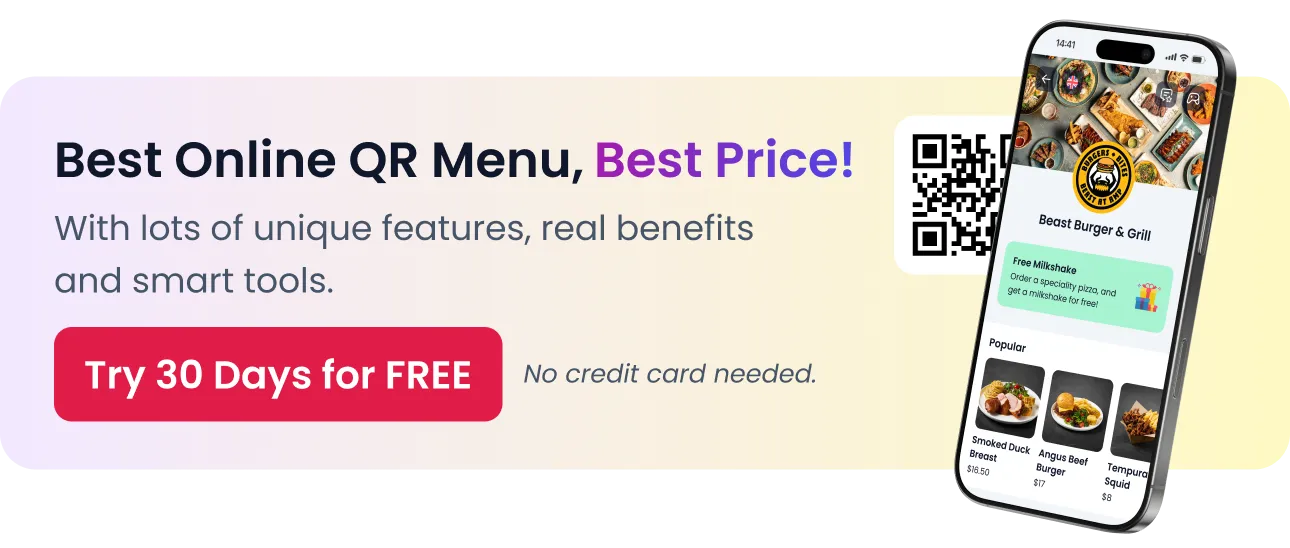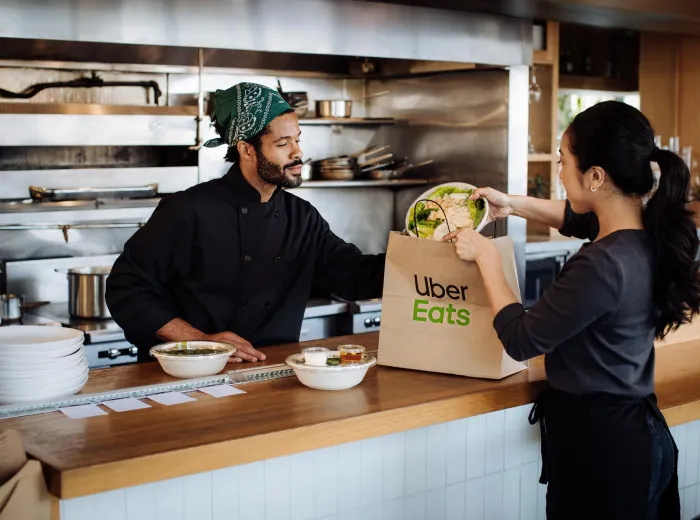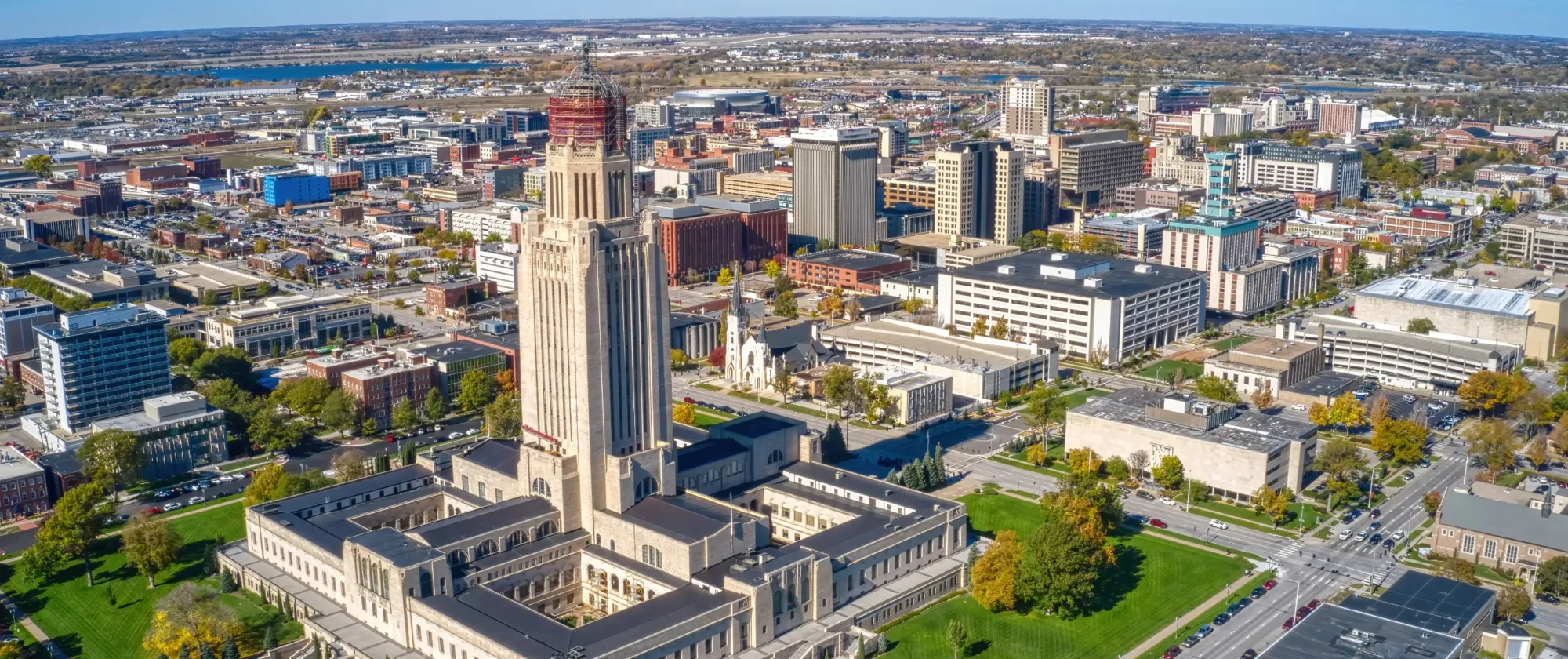
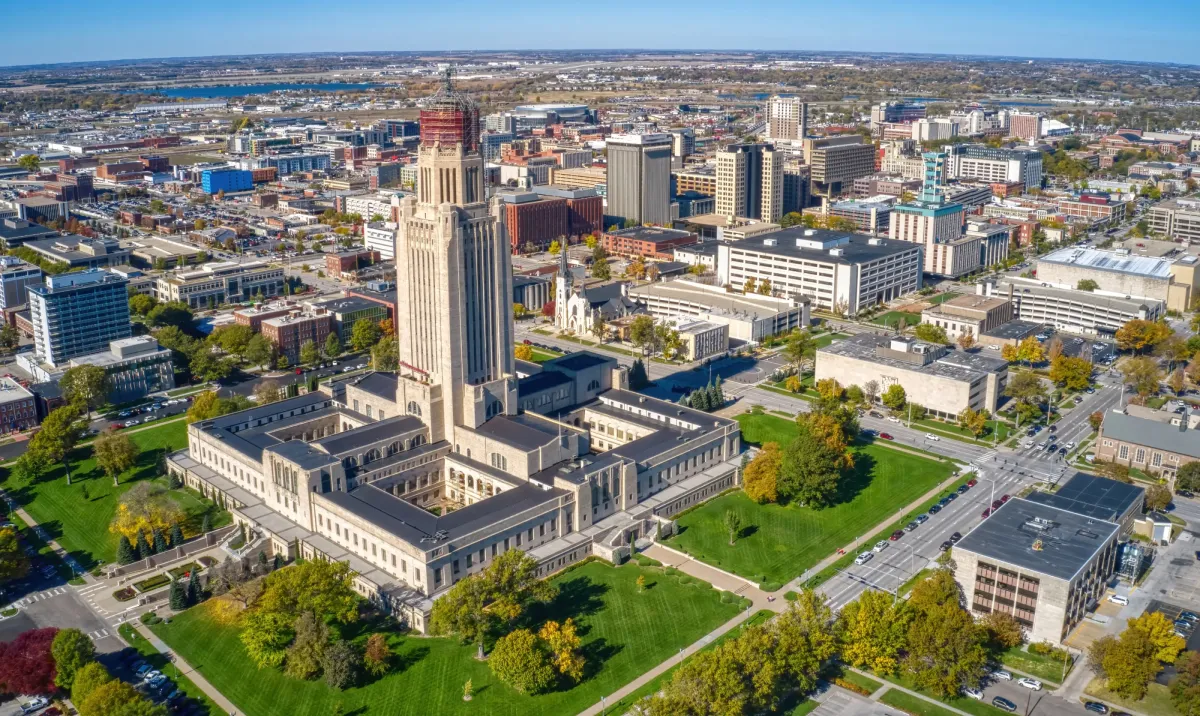
Opening a Restaurant in Nebraska: 10 Mistakes Not to Make
Opening a restaurant in Nebraska is an exciting opportunity, but it comes with challenges that can make or break your success. From understanding local regulations to choosing the right location, every decision matters. Many aspiring restaurant owners make costly mistakes that can lead to financial struggles, legal issues, or even business failure. However, with proper planning and awareness, you can avoid these common pitfalls.
In this guide, we’ll walk you through the 10 biggest mistakes restaurant owners make when starting their business in Nebraska. Whether you’re launching a fine-dining establishment in Omaha, a cozy café in Lincoln, or a fast-casual eatery in Grand Island, this article will help you navigate potential challenges and set your restaurant up for long-term success.
By the end of this guide, you’ll learn:
✅ How to conduct proper market research to attract the right customers
✅ What financial mistakes to avoid when budgeting your restaurant startup
✅ How to comply with Nebraska’s food safety and business regulations
✅ Why choosing the right location is crucial for long-term success
✅ And much more!
Let’s dive into the most common mistakes and how you can steer clear of them. 🚀
Skipping Market Research: Know Your Audience First
Many restaurant owners assume that great food and passion are enough to guarantee success. However, failing to conduct thorough market research can lead to poor customer turnout, pricing issues, and a misaligned concept. Before you invest in a location, equipment, or marketing, you need to understand your target audience, competition, and market trends in Nebraska.
Why Market Research Is Essential for Nebraska Restaurants
Market research helps you make informed decisions rather than relying on guesswork. It enables you to:
- Identify the demographics of your potential customers (age, income level, dining preferences).
- Understand what types of restaurants are in high demand in different Nebraska cities.
- Evaluate how much competition exists in your niche and how to differentiate yourself.
- Determine the best pricing strategy based on local economic conditions.
- Minimize the risk of failure by ensuring there’s actual demand for your concept.
Ignoring market research means you may open a restaurant that doesn’t attract enough customers, leading to financial struggles from day one.
How to Analyze Local Competition and Customer Demographics
Before finalizing your restaurant concept, take a close look at your competitors and potential customers:
✅ Study your competitors
- Visit local restaurants similar to your concept to analyze their strengths and weaknesses.
- Check their menu prices, customer reviews, and busiest hours to spot gaps in the market.
- Identify what makes them successful—do they have a strong brand, great service, or a unique menu?
✅ Understand customer demographics
- Use U.S. Census data and Nebraska business reports to learn about the local population.
- Conduct online surveys or visit food courts to see what types of food people enjoy.
- Leverage tools like Google Trends to see what cuisines are trending in Nebraska.
Without this research, you risk opening a restaurant in a location or niche that doesn’t match customer needs.
Identifying Gaps and Opportunities in the Nebraska Food Scene
To stand out, you need to find opportunities that competitors haven’t tapped into yet. Some ways to do this include:
📌 Look for underrepresented cuisines – If there are many burger joints but few Thai restaurants, a Thai concept might work well.
📌 Identify unmet needs – Is there a demand for late-night dining, healthier options, or delivery-only kitchens?
📌 Explore trends – Farm-to-table, plant-based menus, and fusion cuisine are gaining traction in various Nebraska cities.
By identifying market gaps early, you can position your restaurant as a unique, in-demand option that attracts loyal customers from the start.
Choosing the Wrong Location: Factors You Must Consider
Picking the right location is one of the most important decisions when opening a restaurant in Nebraska. A bad location can lead to low foot traffic, high rent with poor returns, and difficulties attracting your target customers. Even the best food and service won’t save a restaurant if it’s in the wrong place.
Before signing a lease, you need to evaluate multiple factors, including visibility, accessibility, zoning laws, and local competition. Let’s break down the key aspects to consider when selecting the perfect spot for your restaurant.
High-Traffic vs. Hidden Gem: Which Is Better for Your Concept?
Not all successful restaurants need to be in high-traffic areas, but location plays a big role in your success. Here’s how to determine what works best for your concept:
✔ High-Traffic Areas (Downtowns, Shopping Centers, Busy Streets)
- Best for fast-casual, quick-service, and coffee shops that rely on impulse visits.
- Offers visibility to walk-in customers, but rent is typically higher.
- Competition is high, so your restaurant must stand out.
✔ Hidden Gems (Neighborhoods, Residential Areas, Destination Dining)
- Ideal for fine dining, themed restaurants, and niche eateries that attract a loyal following.
- Rent is often cheaper, but you’ll rely more on word-of-mouth and marketing.
- Needs strong branding and online presence to get customers to seek it out.
Your choice depends on your business model—do you rely on foot traffic, or are you confident your food and brand will draw people in?
How Zoning Laws Affect Restaurant Locations in Nebraska
Before signing a lease, you must check Nebraska’s zoning regulations, which determine where restaurants can operate.
🔹 Commercial vs. Mixed-Use Zoning – Restaurants are usually allowed in commercial and mixed-use zones, but certain areas may have restrictions on noise levels, operating hours, or alcohol sales.
🔹 Liquor Licensing – If you plan to serve alcohol, check whether the location meets Nebraska’s liquor license requirements. Some areas have stricter regulations than others.
🔹 Health and Safety Requirements – Ensure the property meets building codes for ventilation, fire safety, and kitchen setup.
Ignoring zoning laws can result in fines or even force you to relocate after investing in the space. Always consult local authorities before finalizing your location.
Parking, Accessibility, and Foot Traffic: Key Location Factors
A great location isn’t just about being in a busy area—it must also be convenient for customers.
🚗 Parking Availability
- Restaurants with easy parking attract more customers, especially in suburban and residential areas.
- If parking is limited, consider valet services or partnerships with nearby lots.
🚶 Foot Traffic & Visibility
- Observe foot traffic during different times of the day—lunchtime, evenings, weekends.
- Locations near schools, offices, and entertainment districts tend to perform better.
♿ Accessibility for All Customers
- Ensure the location is wheelchair-accessible and complies with ADA regulations.
- Consider delivery-friendly locations if takeout and online orders will be a major revenue stream.
A location that’s hard to find, inconvenient to access, or lacks parking can drive potential customers away, no matter how good your food is.
Underestimating Startup Costs: Budgeting Mistakes to Avoid
One of the biggest reasons new restaurants fail is running out of money too soon. Many first-time restaurant owners underestimate how much capital they need to cover everything from equipment to licensing fees, and even unexpected costs. Without a solid financial plan, you risk overspending or running out of cash before reaching profitability.
Let’s break down the key budgeting mistakes and how to avoid them.
Common Hidden Costs in Nebraska Restaurant Startups
When estimating startup costs, many entrepreneurs focus only on rent, equipment, and staff salaries. However, many hidden costs can drain your budget quickly.
📌 Permit & License Fees
- Business license, health permits, and liquor licenses all come with costs.
- Nebraska liquor license fees vary based on the type of alcohol served and location.
📌 Construction & Renovation
- If your space needs major work (plumbing, electrical, kitchen modifications), expect high costs.
- Even minor renovations can add $50,000 – $200,000 to your expenses.
📌 Technology & Software
- POS system, online ordering, accounting software, and security systems.
- Many POS systems require monthly fees that add up over time.
📌 Pre-Opening Costs
- Soft opening expenses (marketing, free samples, influencer events).
- Staff training costs – payroll expenses before officially opening.
Failing to budget for these hidden costs can lead to major financial struggles early on.
How Much Does It Really Cost to Open a Restaurant in Nebraska?
The cost of opening a restaurant varies depending on size, concept, and location. Here’s a general breakdown of what to expect:
| Expense Category | Estimated Cost Range |
|---|---|
| Lease & Security Deposit | $5,000 – $30,000+ |
| Renovations & Equipment | $50,000 – $250,000+ |
| Licenses & Permits | $3,000 – $20,000+ |
| Initial Inventory & Supplies | $10,000 – $40,000 |
| Marketing & Branding | $5,000 – $25,000 |
| Staff Salaries & Training | $10,000 – $50,000+ |
| Technology & POS System | $2,000 – $15,000 |
| Emergency Fund (6 months) | $20,000 – $100,000 |
| Total Estimate | $100,000 – $500,000+ |
Having a detailed financial plan helps you prepare for actual costs and prevents underfunding.
Securing Funding: Loans, Grants, and Investor Options
If you don’t have enough personal savings, there are several funding options available:
💰 Small Business Loans
- The SBA 7(a) loan program offers financing up to $5 million for restaurant startups.
- Nebraska has local business development programs offering loans to small businesses.
🎯 Grants & Incentives
- The Nebraska Economic Development Office provides grants for small businesses.
- Some cities offer tax incentives for businesses in redevelopment zones.
🤝 Investors & Crowdfunding
- Angel investors or venture capital firms may be interested in your concept.
- Platforms like Kickstarter and Mainvest allow restaurants to raise funds through community support.
No matter which funding option you choose, ensure you have a clear business plan and financial projections to convince lenders or investors.
Ignoring Nebraska’s Health and Licensing Requirements
Many new restaurant owners overlook the importance of obtaining the right licenses and permits before opening. Failing to comply with Nebraska’s health and safety regulations can lead to heavy fines, delayed openings, or even business closure. Understanding and following local health and licensing laws is crucial for running a successful and legally compliant restaurant.
What Permits and Licenses Do You Need?
Nebraska requires multiple licenses and permits before you can legally operate a restaurant. Missing even one can result in costly penalties. Here are the key ones you’ll need:
📌 Business License
- Issued by the Nebraska Secretary of State and your local city or county.
- Must be renewed annually.
📌 Food Establishment Permit
- Required for any business serving food.
- Issued by the Nebraska Department of Agriculture (NDA) Food Safety Program.
📌 Liquor License (If Serving Alcohol)
- Managed by the Nebraska Liquor Control Commission.
- Different types exist based on whether you serve beer, wine, or full liquor.
📌 Health Department Inspection Approval
- Your restaurant must pass a health inspection before opening.
- Covers food handling, cleanliness, pest control, and employee hygiene.
📌 Sales Tax Permit
- Restaurants must collect and report sales tax to the Nebraska Department of Revenue.
- Sales tax rate varies by city.
📌 Signage and Zoning Permits
- Check with your local zoning office before putting up outdoor signs.
- Some areas have restrictions on illuminated or oversized signs.
Skipping any of these permits can lead to legal trouble, so plan ahead and ensure you have all necessary documentation.
Navigating Health Inspections and Compliance Regulations
Nebraska’s health and safety regulations ensure restaurants operate in a sanitary and safe environment. To pass your inspections and avoid violations, follow these guidelines:
✅ Food Handling & Storage
- All staff must be trained in safe food handling.
- Store raw meats below ready-to-eat foods to prevent contamination.
- Maintain refrigeration at 41°F (5°C) or lower to prevent bacterial growth.
✅ Sanitation & Cleanliness
- Regularly clean and sanitize prep areas, equipment, and utensils.
- Set up a pest control plan to avoid infestations.
- Provide accessible handwashing stations for employees.
✅ Employee Training & Certification
- Nebraska requires at least one Certified Food Protection Manager (CFPM) per establishment.
- Staff should know proper temperature controls, allergen safety, and hygiene protocols.
Failing an inspection can delay your opening or result in fines, shutdowns, or bad publicity. Keep a checklist of health regulations and conduct internal inspections before the official visit.
How to Avoid Penalties and Fines for Non-Compliance
Avoiding fines and compliance issues starts with proactive planning. Here’s how:
🔹 Apply for all permits early – Some licenses take weeks or months to process. Start early to avoid delays.
🔹 Schedule a pre-inspection check – Before the health department visits, conduct an internal audit to fix any issues.
🔹 Train staff continuously – Regularly educate employees on food safety protocols and compliance updates.
🔹 Keep records updated – Always renew permits on time and keep copies accessible for inspectors.
Penalties for non-compliance can range from fines to forced closure, damaging your reputation and finances. Ensuring full legal compliance from day one helps you avoid unnecessary risks and lets you focus on growing your business.
Poor Menu Planning: How It Can Make or Break You
Your restaurant’s menu is more than just a list of dishes—it’s a strategic tool that affects profitability, customer satisfaction, and operational efficiency. A poorly planned menu can lead to high food costs, slow service, and a weak brand identity. Many restaurant owners make the mistake of overcomplicating their menus, ignoring pricing strategies, or failing to align offerings with customer demand.
Let’s break down how to create a menu that boosts sales and enhances the dining experience.
Designing a Profitable and Customer-Friendly Menu
A well-structured menu should be visually appealing, easy to navigate, and strategically priced. Here’s how to achieve that:
📌 Limit the Number of Items
- A streamlined menu (25-35 items) reduces food waste and speeds up service.
- Too many choices overwhelm customers and increase ingredient costs.
📌 Organize the Menu for Easy Reading
- Use clear section headers (Appetizers, Entrees, Desserts, Drinks).
- Avoid clutter—use simple fonts and spacing for readability.
📌 Highlight High-Profit Items
- Use menu psychology—place the most profitable dishes in the top-right corner, where eyes naturally go first.
- Use icons, bold text, or chef’s recommendations to draw attention to key items.
📌 Align the Menu with Your Concept
- A fine-dining restaurant should have an elegant and sophisticated menu design.
- A casual eatery benefits from simple descriptions and easy-to-read fonts.
A well-structured menu enhances customer experience and increases average order value, ultimately driving profits.
The Impact of Food Costs on Your Bottom Line
Food costs can make or break your restaurant’s financial health. The key is to price menu items in a way that maintains profit margins while staying competitive.
🔹 Calculate Food Costs for Every Item
- The ideal food cost percentage is 25-35% of the menu price.
- Use this formula:
Food Cost Percentage = (Cost of Ingredients per Dish ÷ Menu Price) × 100
🔹 Control Portion Sizes
- Standardized portion sizes prevent inconsistent costs and food waste.
- Train staff to use measuring tools and portion scales for consistency.
🔹 Source Ingredients Wisely
- Buy in bulk for staple ingredients to reduce costs.
- Work with local suppliers to cut down on transportation costs and offer fresher ingredients.
Keeping food costs under control ensures your restaurant stays profitable without sacrificing quality.
Menu Psychology: How to Increase Average Spend Per Guest
Smart menu design isn’t just about listing items—it’s about subtly influencing customer choices. Here’s how to use menu psychology to boost sales:
✅ Use Decoy Pricing
- Place a high-priced item next to a mid-priced one to make the latter seem more reasonable.
✅ Avoid Dollar Signs ($)
- Studies show that removing dollar signs makes customers spend more.
✅ Offer Combo or Upsell Options
- Suggest add-ons or bundles (e.g., “Make it a meal for $2 extra”).
✅ Use Descriptive Language
- Instead of “Grilled Chicken,” say “Fire-Grilled Lemon Herb Chicken” to make it sound more appealing.
A strategically designed menu can increase customer spending by 10-15%, making a significant impact on your revenue.
Not Investing in Marketing: How to Get Customers in the Door
Even if your restaurant has amazing food and great service, it won’t succeed without effective marketing. Many restaurant owners underestimate the power of marketing or believe that word-of-mouth alone will bring in customers. However, in a competitive market like Nebraska, having a strong marketing strategy is essential to attract and retain diners.
Let’s explore the key marketing mistakes to avoid and how to build a strong presence for your restaurant.
Why Local SEO and Google My Business Are Must-Haves
If customers can’t find you online, they won’t visit your restaurant. Investing in local SEO ensures your restaurant appears in searches when people look for dining options in Nebraska.
📌 Claim and Optimize Your Google My Business (GMB) Profile
- Add your address, phone number, website, and business hours.
- Upload high-quality photos of your food and dining space.
- Encourage customers to leave positive reviews (more reviews = higher ranking).
📌 Use Local Keywords to Boost Visibility
- Include location-specific keywords on your website (e.g., “best Italian restaurant in Omaha”).
- Optimize your website with phrases like “top brunch spots in Lincoln” to attract nearby customers.
📌 Get Listed on Online Directories
- Ensure your restaurant is listed on Yelp, TripAdvisor, and OpenTable.
- Keep information consistent across all platforms to improve search rankings.
Neglecting local SEO means missing out on free, high-intent traffic from customers who are actively looking for places to eat.
Social Media Strategies That Work for Nebraska Restaurants
Social media is one of the cheapest and most effective ways to market your restaurant. But many owners either ignore it or don’t use it properly. Here’s how to build an engaged audience and drive more traffic to your restaurant.
🔹 Post High-Quality Food Photos
- Use natural lighting and close-up shots to make dishes look irresistible.
- Highlight specials, seasonal items, and behind-the-scenes content.
🔹 Leverage Instagram & Facebook for Promotions
- Run giveaways (e.g., “Tag a friend for a chance to win a free meal”).
- Use Instagram Reels and Stories to showcase menu items and special events.
- Post user-generated content (repost customers’ photos with their permission).
🔹 Engage with Your Audience
- Respond to comments and messages quickly to build a loyal community.
- Ask customers questions: “What new dish should we add to the menu?”
- Run polls and interactive content to keep your audience engaged.
Restaurants with a strong social media presence enjoy more repeat customers and increased foot traffic.
The Power of Online Reviews and How to Manage Them
Online reviews can make or break your restaurant’s reputation. Many owners fail to manage reviews properly, which can hurt business. Here’s how to stay on top of your online reputation:
✅ Encourage Satisfied Customers to Leave Reviews
- Train staff to politely ask happy customers to leave a Google or Yelp review.
- Offer a small incentive (like a free dessert) for verified reviews.
✅ Respond to Negative Reviews Professionally
- Never ignore bad reviews—address complaints and offer a solution.
- Keep responses polite and professional (e.g., “We’re sorry for your experience—please reach out so we can make it right.”).
✅ Monitor Your Reputation
- Set up Google Alerts for mentions of your restaurant.
- Use review management software to track and respond to feedback.
Handling reviews well builds trust and encourages new customers to give your restaurant a try.
Hiring Mistakes: Building a Strong Team from Day One
Your restaurant is only as good as the people running it. Hiring the wrong team can lead to high turnover, poor service, and costly retraining—all of which hurt your bottom line. Many restaurant owners rush the hiring process, fail to offer proper training, or neglect to build a strong workplace culture.
To succeed, you need a skilled, reliable, and motivated team. Let’s look at common hiring mistakes and how to build a team that helps your restaurant thrive.
Common Hiring Mistakes That Lead to High Turnover
High turnover is one of the biggest challenges in the restaurant industry. If you hire the wrong people, you’ll waste time and money on constant training and rehiring. Here are the top hiring mistakes to avoid:
📌 Hiring Too Quickly
- Many owners panic-hire just to fill positions, leading to unqualified employees.
- Take the time to interview multiple candidates before making a decision.
📌 Failing to Check References
- A strong resume doesn’t guarantee a great employee.
- Always call previous employers to verify work ethic, reliability, and attitude.
📌 Not Hiring for Attitude and Culture Fit
- Skills can be taught, but a bad attitude can ruin customer experience.
- Look for team players who align with your restaurant’s values.
📌 Ignoring Red Flags
- Candidates who job-hop frequently may not stay long.
- Unreliable availability and poor communication in the interview often translate into workplace issues.
Hiring thoughtfully and strategically from the beginning reduces stress, improves service quality, and builds long-term success.
Training and Onboarding: How to Set Your Staff Up for Success
A strong training program ensures that employees understand your restaurant’s expectations, service style, and workflow. Many restaurant owners skip proper onboarding, leading to inconsistent service and staff frustration.
✅ Create a Structured Training Plan
- Provide a step-by-step guide for each role (servers, kitchen staff, managers).
- Offer shadowing opportunities so new hires learn from experienced team members.
✅ Train for Customer Service Excellence
- Teach staff how to handle difficult customers, upselling techniques, and order accuracy.
- Conduct role-playing scenarios to prepare them for real-world interactions.
✅ Use Checklists for Consistency
- Develop opening and closing checklists to ensure efficiency.
- Have a server steps-of-service guide to maintain a seamless dining experience.
✅ Offer Ongoing Training
- Schedule monthly refresher sessions to keep employees engaged.
- Introduce new skills and cross-training opportunities to reduce staff burnout.
A well-trained team not only improves customer satisfaction but also reduces errors and speeds up service, increasing profitability.
Creating a Positive Work Culture to Retain Employees
In an industry known for high turnover, retaining employees should be a priority. A positive work environment leads to loyal, motivated staff who care about your business. Here’s how to build a strong workplace culture:
🎯 Recognize and Reward Hard Work
- Offer bonuses, employee-of-the-month incentives, or small perks like free meals.
- Celebrate achievements with staff appreciation events.
🎯 Promote Work-Life Balance
- Avoid overloading employees with long shifts—burnout leads to turnover.
- Offer flexible scheduling options when possible.
🎯 Encourage Team Bonding
- Plan team outings, staff meals, or after-hours gatherings to build camaraderie.
- Encourage open communication between managers and employees.
🎯 Listen to Employee Feedback
- Set up anonymous surveys or regular meetings to discuss concerns.
- Address issues quickly to show staff that their opinions matter.
A restaurant with happy, engaged employees will see higher productivity, better customer service, and long-term success.
Poor Financial Management: Avoiding Cash Flow Issues
Many restaurant owners underestimate the importance of financial management, leading to cash flow problems, unexpected losses, and even business failure. Without proper budgeting, pricing strategies, and expense tracking, your restaurant can quickly run into financial trouble.
To ensure long-term profitability, you must monitor expenses, optimize pricing, and maintain positive cash flow. Let’s explore the key financial mistakes to avoid and how to keep your restaurant financially healthy.
Setting Up Bookkeeping and Accounting for Success
Good financial management starts with accurate bookkeeping. Many restaurant owners either ignore accounting or rely on outdated methods, which can lead to errors and cash flow problems.
📌 Use Accounting Software
- Tools like QuickBooks, Xero, or Restaurant365 automate tracking expenses, revenue, and payroll.
- Digital systems help reduce errors and save time compared to manual bookkeeping.
📌 Track Daily Sales and Expenses
- Maintain a daily sales report to monitor cash flow patterns.
- Record all expenses, including ingredients, labor, utilities, and marketing.
📌 Separate Personal and Business Finances
- Open a business bank account to keep transactions organized.
- Use a dedicated business credit card to track spending and earn rewards.
📌 Work with an Accountant
- A professional accountant helps with tax filings, payroll management, and financial planning.
- Regular financial audits can identify leaks and inefficiencies before they become serious.
Without organized bookkeeping, you’ll struggle to understand your financial health and risk making costly mistakes.
How to Price Your Menu for Profit, Not Just Sales
One of the biggest financial mistakes restaurant owners make is pricing menu items incorrectly. Setting prices too low can lead to losses, while setting them too high can drive customers away. Here’s how to price strategically for profitability.
✅ Calculate Your Food Cost Percentage
- Ideal food cost should be 25-35% of the menu price.
- Use this formula:
Menu Price = (Cost of Ingredients per Dish ÷ Desired Food Cost Percentage) × 100
✅ Factor in Overhead Costs
- Rent, labor, and utilities should be included in pricing decisions.
- Use the prime cost formula to determine profitability:
Prime Cost = (Food Cost + Labor Cost) ÷ Total Sales
✅ Use Menu Engineering to Promote High-Profit Items
- Highlight high-margin dishes by using design tricks (bold text, boxes, or icons).
- Reduce low-margin, high-cost items that aren’t selling well.
✅ Monitor Competitor Pricing
- Research local restaurants to ensure your prices are competitive.
- Offer value-driven options, such as combo meals, to boost perceived value.
Smart menu pricing ensures that your restaurant remains profitable without overcharging customers.
Tracking Expenses and Preventing Financial Leaks
Many restaurant owners lose money without realizing it due to untracked expenses, inefficient processes, and unnecessary costs. Here’s how to prevent financial leaks:
🔹 Monitor Inventory Closely
- Use an inventory management system (MarketMan, BlueCart) to track food waste.
- Regularly audit ingredient usage to prevent over-ordering.
🔹 Reduce Labor Costs Without Cutting Quality
- Schedule efficient shifts to avoid overstaffing during slow periods.
- Cross-train employees so staff can fill multiple roles when needed.
🔹 Negotiate with Vendors
- Build strong relationships with suppliers to get bulk discounts and better payment terms.
- Compare multiple vendors to find the best prices on ingredients.
🔹 Eliminate Unnecessary Expenses
- Review subscription services, marketing costs, and equipment leases to cut waste.
- Switch to energy-efficient appliances to lower utility costs.
Tracking expenses diligently helps prevent cash flow shortages and ensures your restaurant stays financially sustainable.
Ignoring Technology: Why Digital Tools Are Game-Changers
In today’s restaurant industry, technology isn’t optional—it’s essential. Yet, many restaurant owners fail to embrace digital tools, leading to inefficiencies, lost revenue, and poor customer experiences. From POS systems to online ordering platforms and data analytics, the right technology can streamline operations, increase profits, and enhance customer satisfaction.
Let’s explore the key restaurant technologies and how they can transform your business.
POS Systems, Reservation Software, and Online Ordering Tools
A modern Point of Sale (POS) system is much more than just a cash register—it’s the central hub of your restaurant’s operations. Many restaurant owners stick to outdated cash registers, missing out on valuable automation and insights.
📌 Why You Need a Smart POS System
- Automates sales tracking, inventory management, and staff scheduling.
- Helps reduce errors and speed up service.
- Integrates with online ordering platforms for seamless takeout and delivery management.
📌 Popular POS Systems for Restaurants
- Toast – Ideal for full-service and fast-casual restaurants.
- Square for Restaurants – Great for small businesses with simple setups.
- Lightspeed – Best for multi-location restaurants and advanced reporting.
📌 Online Reservations & Ordering Tools
- OpenTable, Resy, and Yelp Reservations help manage bookings efficiently.
- Menuviel allows restaurants to offer digital menu ordering with allergen badges.
- ChowNow, Uber Eats, and DoorDash help reach delivery customers.
Failing to invest in these tools can lead to slow service, missed sales opportunities, and frustrated customers.
How QR Code Menus and Digital Payments Improve Efficiency
Traditional paper menus and cash payments are becoming outdated. Many restaurants in Nebraska are switching to QR code menus and digital payment options for better efficiency and hygiene.
✅ Benefits of QR Code Menus
- Customers scan a code on their phone to view the menu, reducing printing costs.
- Allows for instant updates to prices and specials without reprinting menus.
- Integrates with POS systems for contactless ordering and payments.
✅ Why You Should Accept Digital Payments
- Mobile wallets like Apple Pay, Google Pay, and contactless credit cards are growing in popularity.
- Digital payments speed up transactions, reducing wait times.
- Lowers the risk of cash-handling errors and theft.
Restaurants that embrace contactless technology provide a faster, safer, and more modern dining experience.
The Role of Data Analytics in Running a Successful Restaurant
Ignoring data-driven decision-making is a costly mistake. Many restaurant owners rely on gut instinct instead of tracking key performance metrics. Data analytics tools can help you:
🔹 Track Sales Trends
- Identify top-selling menu items and remove underperforming dishes.
- Optimize pricing based on demand and profitability data.
🔹 Reduce Food Waste
- Use inventory tracking to minimize spoilage and overordering.
- Forecast demand using historical sales data to avoid waste.
🔹 Improve Customer Retention
- Collect customer data to personalize promotions and loyalty programs.
- Analyze customer feedback and reviews to enhance service.
📊 Best Analytics Tools for Restaurants
- Restaurant365 – Tracks inventory, labor costs, and sales.
- Square Analytics – Offers insights into customer behavior and peak hours.
- Upserve – Provides detailed food cost and menu performance reports.
Using data-driven insights allows you to optimize operations, cut costs, and improve customer experience.
Embracing restaurant technology gives you a competitive edge, increases efficiency, and boosts profits. Restaurants that fail to adapt to digital trends risk falling behind.
Overlooking Customer Experience: The Key to Long-Term Success
A restaurant’s success isn’t just about great food—it’s about how customers feel when they dine with you. Many restaurant owners focus too much on operations and costs, neglecting the customer experience. A poor experience leads to bad reviews, fewer repeat customers, and lower revenue.
To build a loyal customer base, you must prioritize service, atmosphere, and personalized interactions. Let’s explore how to create an unforgettable dining experience.
Why Customer Service Matters More Than Food Quality
You can serve the best food in Nebraska, but if your service is slow or unfriendly, customers won’t return. Studies show that 86% of diners are willing to pay more for a better experience. Here’s why service is just as important as food:
📌 First Impressions Are Everything
- A warm greeting sets the tone for the entire meal.
- Slow or unwelcoming service makes customers feel undervalued.
📌 Friendly & Attentive Staff Increase Sales
- Servers who make recommendations and upsell items boost revenue.
- Happy employees create a more welcoming atmosphere for guests.
📌 Bad Service = Bad Reviews
- A single negative review about bad service can turn away potential customers.
- People are more likely to share bad experiences than good ones.
Customer service directly impacts revenue, so investing in staff training and hospitality is crucial.
How to Create a Memorable Dining Experience
A great restaurant experience goes beyond food and service—it includes ambiance, engagement, and personalization. Here’s how to enhance the customer experience:
✅ Perfect the Atmosphere
- Use soft lighting, comfortable seating, and appropriate music.
- Ensure the restaurant is clean, well-maintained, and welcoming.
✅ Make Every Guest Feel Special
- Train staff to remember regular customers and their preferences.
- Offer birthday discounts or special treats for special occasions.
✅ Speed & Efficiency Matter
- No one likes waiting too long for their food—ensure kitchen and staff efficiency.
- Implement table turnover strategies while maintaining a comfortable pace.
✅ Leverage Technology to Improve Experience
- Use online reservations and order tracking to reduce wait times.
- Offer loyalty rewards through your POS system for repeat customers.
Restaurants that go the extra mile to enhance customer experience see higher retention rates and stronger word-of-mouth marketing.
Building Customer Loyalty Through Personalized Service
Repeat customers are the lifeblood of a restaurant. Here’s how to turn first-time diners into loyal patrons:
🎯 Create a Loyalty Program
- Offer discounts, free meals, or exclusive perks for returning customers.
- Use digital loyalty apps like Menuviel to track and reward customers.
🎯 Engage with Guests Beyond the Restaurant
- Follow up with customers via email or SMS to thank them for their visit.
- Send exclusive offers or early access to special promotions and events.
🎯 Listen to Customer Feedback
- Actively monitor online reviews and respond to both positive and negative feedback.
- Use surveys to understand what customers love and what can be improved.
Loyal customers spend more, visit more frequently, and recommend your restaurant to others. Investing in personalized service builds long-term relationships and keeps your restaurant thriving.
Key Takeaways
Opening a restaurant in Nebraska is an exciting journey, but avoiding common pitfalls is crucial to long-term success. By carefully planning and making informed decisions, you can set your business up for profitability and growth. Here are the key lessons to remember:
✅ Conduct Market Research – Understand your target audience, analyze competitors, and identify gaps in Nebraska’s food scene before opening.
✅ Choose the Right Location – Consider foot traffic, parking availability, zoning laws, and proximity to your ideal customers to avoid costly relocation.
✅ Budget Accurately – Don’t underestimate startup costs; account for hidden expenses like permits, renovations, and pre-opening payroll.
✅ Comply with Health & Licensing Regulations – Obtain all necessary licenses, pass health inspections, and follow Nebraska’s food safety laws to avoid legal trouble.
✅ Optimize Your Menu for Profitability – Keep it streamlined, calculate food costs, and use menu engineering tactics to increase sales.
✅ Invest in Marketing – Utilize local SEO, social media, and online reviews to attract and retain customers.
✅ Hire and Train Wisely – Build a strong team, focus on customer service, and create a positive work culture to reduce turnover.
✅ Manage Finances Effectively – Track expenses, set up proper bookkeeping, and price menu items strategically to maintain positive cash flow.
✅ Leverage Technology – Use POS systems, online ordering, QR code menus, and data analytics to streamline operations and enhance customer experience.
✅ Prioritize Customer Experience – Train staff to provide exceptional service, personalize guest interactions, and implement a loyalty program to encourage repeat visits.
By avoiding these common mistakes, you’ll position your restaurant for long-term success in Nebraska’s competitive dining industry. A well-planned and well-managed restaurant isn’t just a business—it’s a thriving destination that keeps customers coming back. 🚀
Your Frequently Asked Questions: Opening a Restaurant in Nebraska
Starting a restaurant is full of questions, especially when navigating Nebraska’s unique business landscape. Here’s a curated FAQ section designed to answer what prospective owners are actively Googling—and help your article rank better.
What permits and licenses are required to open a restaurant in Nebraska?
To launch legally, you’ll need an Employer Identification Number (EIN), a Nebraska business license, a food facility or food seller’s permit, a food handler’s certification, and—if applicable—a liquor license. Some businesses may also need a certificate of occupancy.
How much does it cost to open a restaurant in Nebraska?
Startup costs vary widely depending on concept, size, and location. Be sure to budget for leasing or renovations, permits, equipment, staffing, marketing, and a cushion for unexpected expenses.
How do I choose the right location for my Nebraska restaurant?
Consider foot traffic, visibility, parking, zoning laws, community demographics, and nearby competitors. Whether targeting downtown hustle or neighborhood charm, align the location with your concept and target clientele.
What are common financial pitfalls to avoid when opening a restaurant?
Avoid underestimating total startup and operating costs. Create a realistic budget with contingencies, track cash flow, and set competitive—but profitable—menu prices.
How can I market my new restaurant to reach customers in Nebraska?
Invest in local SEO—optimize your Google My Business profile and use location‑specific keywords (e.g., “best brunch in Omaha”). Leverage social media with high‑quality food photos, engage users through stories and polls, and encourage satisfied diners to leave online reviews.
ABOUT THE AUTHOR
Erkin Coban
Your Customers Deserve The Best
And we got Menuviel for them.
The fastest and easy-to-use online QR menu with 12+ unique features. Choose Menuviel and elevate your service quality to the next level.
Use free for the first 30 days.
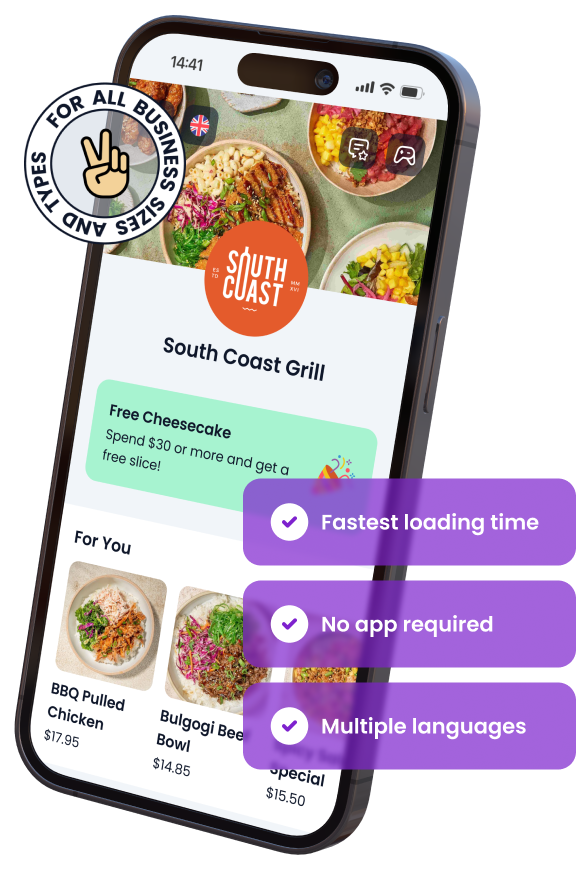
In This Article

Free AI Tools for Restaurants
TRY NOW ➜

Manage what’s available - anytime, instantly
Show or hide menus, categories, or items instantly. Perfect for time-based offerings or sold-out dishes.


